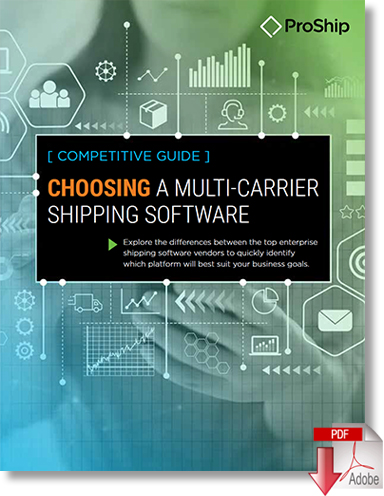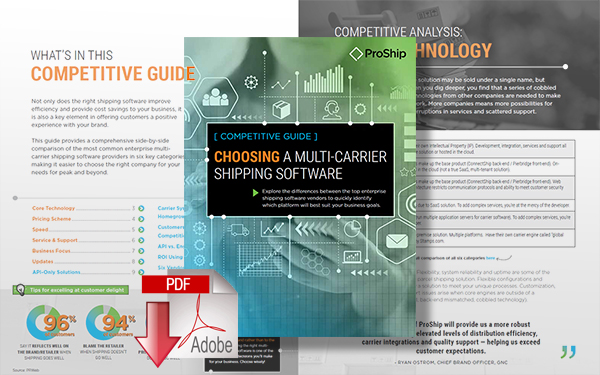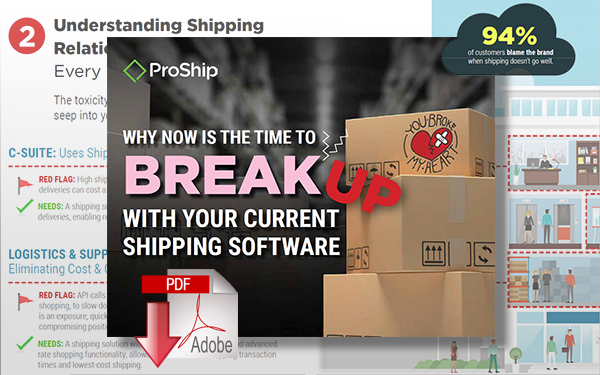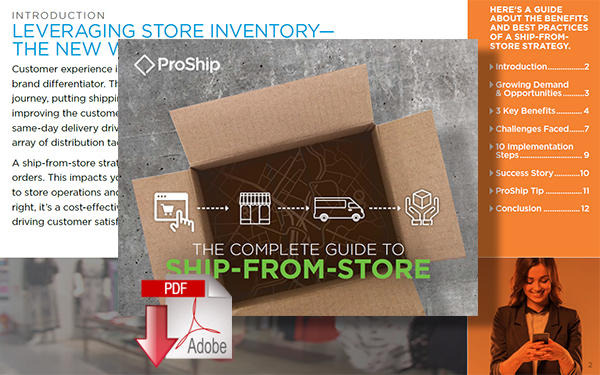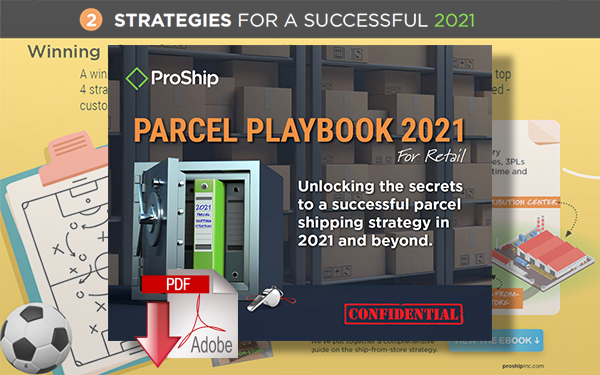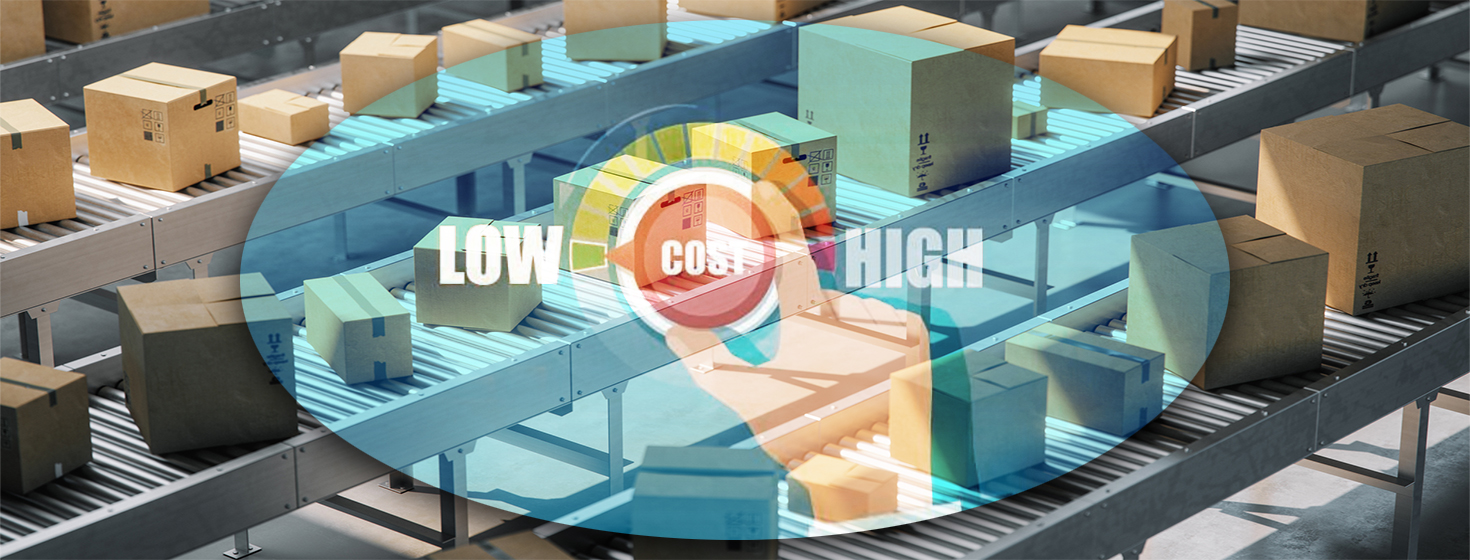Why Single-Carrier Parcel Shipping Strategies Are Dead!

There are a variety of reasons why continuing to rely on a single major carrier is a very risky business.
Shipping Contracts
Years ago, companies regularly negotiated exclusive shipping contracts with major carriers who handled all their parcel shipping (and some freight as well) to customers, partners, distributors, and more.
These kinds of arrangements had several advantages.
Companies benefited from predictable costs and delivery guarantees, and carriers could more easily forecast volume and revenue.
Even today, you may still be relying on a similar model.
But if you are, you're probably quickly finding that it's no longer sufficient.
On one hand, there's been a steep rise in parcel shipping volume in 2020 due to the pandemic, and it will only get busier during peak season.
On the other hand, post-peak may still have high-volume shipping, and you won’t see much of a dip in parcel volume.
Relying On A Single Carrier May Leave You Stranded…
2020 has been challenging for both online sellers and carriers.
Reasons for Dissatisfaction with Shipping During COVID-19
Deliveries arrived late - 32%
Slow delivery time/lack of options - 27%
Expensive shipping costs - 19%
So challenging, that shippers who are currently utilizing single-carrier strategies or national carriers only are struggling with a variety of pain points and risk failing their customers.
Single-Carrier or National Carrier-Only Strategies Cause Significant Risk in the Following Areas:
- Lack of choice: With only a few carriers to choose from, you also minimize your ability to choose a better shipping option at a lower cost. You also lessen the number of shipping options you provide your customers at check out, such as same-day and next-day shipping.
- Shipping costs: Due to this lack of choice, you’re stuck with fewer rates to rate shop and national carrier surcharges such as those related to the pandemic and peak season. In fact, peak season surcharges look a little different this year. Did you know that this is the first year USPS has implemented peak surcharges? Did you know that this year’s residential peak surcharges from FedEx and UPS could add up to HUGE amounts? Did you know that some regional carriers like Spee-Dee, LSO, and PCF don’t make shippers pay these surcharges?
Watch On-Demand: Uncovering Peak 2020 Surcharges (above)
- Contract termination due to capacity limits: Because of the historic parcel volume carriers are experiencing, major carriers are putting capacity limits into place. You’ll see that a variety of these limits relate to this year’s residential peak surcharges. For instance, for UPS, if a customer’s peak volumes surpass, 110% up to 300% of their February average weekly volume, customers will pay fees up to $4 per packages shipped. Similarly, shippers could pay up to $5 per package shipped by exceeding weekly averages with FedEx. Unfortunately, this can and will lead to extremely high total shipping fees and can even lead to a carrier canceling their relationship with a customer who continually exceeds parcel volume capacity limits. It’s happened, we’ve seen it.
- The decrease in flexibility: Do you have the ability to ship from all of your origin points? As we talk about capacity and surcharges, it’s extremely important to consider fulfillment from a variety of sources, such as 3PLs, manufacturing vendors, your distribution centers, and your stores. When you increase the number of lanes you’re using to ship, you decrease the shipping time to customers and you decrease the cost of shipping while increasing capacities due to a package’s shortened amount of time in a carrier’s network. Regional carriers are excellent partners for omnichannel fulfillment. In fact, it might surprise you to learn that regional carriers now handle 25% of retail deliveries.
Listen: [ProShip ParcelCast] Episode 2: The Inside Scoop on Regional Carriers
Why Diversify Your Carrier Mix?
There are several main reasons why diversifying your carrier mix is imperative.
1. The surge in e-commerce and direct-to-consumer (DTC) shipping. Before the pandemic, consumers made 32% of their purchases online. During the pandemic, that number has shot up to 58%. And much of this increase is likely to be permanent. If your business isn't set up to manage this new level of parcel shipping volume, you will likely struggle to get the product out the door in a timely fashion, meet your delivery promises, and keep customers returning.
Additional peak season volume will only exacerbate an already tough situation. The more carriers you can leverage, without having to take valuable seconds (or even minutes) to manually log into different carrier systems, the better you'll be able to manage the increased volumes.
2. Continuing supply chain disruptions. Throughout 2020, on-time delivery rates have fallen and carriers have removed their service guarantees. Some vendors have reported a 40% increase in delivery times during the pandemic. While carriers have been increasing capacity, they can still become overloaded at times in certain lanes. That risk will of course increase during peak season, as we continue to deal with the pandemic in many areas and are faced with the additional challenges of winter weather. Add in possible USPS delays and we can expect the uncertainty to continue for the foreseeable future.
The good news is that regional carriers have been less prone to disruptions. They can often circumvent tangles at the major hubs are key to lowering shipping costs and making good on your delivery promises.
NOTE: Adding more regionals to your carrier mix is a smart idea, but adding them earlier in 2021 versus later is recommended. There will be a mad rush in new carrier onboarding directly after peak season as carriers become open to signing on new customers. We recommend that you don’t wait until the last minute.
3. Shipping costs are on the rise. The major carriers and many regional carriers have already announced new peak season surcharges and volume caps as they cope with unprecedented demand. As noted previously, if you exceed your quota, you could be looking at even higher costs, including fines or even contract termination.
This is one of the most persuasive arguments for adopting a multi-carrier strategy. In today's environment, shippers benefit greatly from the flexibility that allows them to quickly find the best rates and options while maximizing their negotiated discounts and avoiding surcharges and capacity limits every time they print a label.
4. Evolving customer expectations. Customers are relying on shipping more than ever before, and customer experience is now synonymous with the product experience. While most customers do understand and forgive delays during the pandemic, 84% are unlikely to purchase again after just one poor shipping experience.
But don’t just think it’s only the younger generation shopping online. The older generation is learning to trust online retailers more, and Boomers, at 23% of the population, still control about 70% of all disposable income. In fact, 47% plan to increase their online shipping ever after pandemic restrictions ease.
So as this generation continues to adapt to e-commerce, it’s important to exceed expectations early on in order to build loyalty within the group.
But customers of all ages want transparency in all phases of the buying process. They want to know what's in stock, where, and they want to choose the most convenient delivery options. Free returns are a primary motivator as well. Shipping and logistics are now an essential way to set your brand apart and build loyalty.
And if you're worried about the cost, don't. The right multi-carrier parcel shipping solution typically saves companies 30% on their shipping costs. It also gives you more chances to position your company as a leader in 2020 and beyond.
You Need a Strong Carrier Mix, Now
Without the ability to rate shop and seamlessly choose between options in the event of a disruption or overload, your profitability and brand reputation will remain at the mercy of unexpected events and the whims of the major carriers. But it doesn't have to be this way.
Multi-carrier shipping software does the heavy lifting for you, automatically. In milliseconds, it will choose the shipping options that will make your customers happy and boost your bottom line.
Talk to us today about diversifying your carrier mix with ProShip multi-carrier parcel shipping software. You'll save money, thrill your customers, build brand loyalty, and position your company to thrive, through peak season and into next year.
Related Resources
Choosing a Multi-Carrier Shipping Software
In this white paper, we explore the differences between the top enterprise shipping software vendors to quickly identify which platform will best suit your business goals. Download Now!
Time to Break Up With Your Current Shipping Software
In the ebook, we look at why It might be time to match your needs to the offerings of various multi-carrier shipping platforms and break up with your current shipping software. Download Now!
The Complete Guide to Ship-From-Store
In this guide, we detail how a ship-from-store strategy leverages store inventory to fulfill orders, which impacts your entire retail network - from supply chain to store operations and customer service. Download Now!
Parcel Playbook 2021 for Retail
In this eBook, you’ll learn the lessons 2020 has taught us about parcel logistics and understand how you can translate them into winning shipping strategies in 2021 and beyond. Download Now!
More Resources from ProShip
Related Article: 8 Ways to Save On Your Supply Chain Parcel Shipping Costs
Article Topics
ProShip News & Resources
Banyan Technology and ProShip announce strategic partnership Advanced Date Shopping Extends Beyond Just Shipping Cost to Fine Tune Which Carrier Service to Use Tips for Cutting Parcel Shipping Costs during this Peak Season Optimizing Transportation Spend and Improving Customer Experience with a Mix of Carrier Services 2021 Virtual ProS Who Know Day Two Recap 2021 Virtual ProS Who Know Day One Recap Antitrust Bill Could Drive Amazon to Sell Logistics Division More ProShipLatest in Transportation
The Two Most Important Factors in Last-Mile Delivery Most Companies Unprepared For Supply Chain Emergency Baltimore Bridge Collapse: Impact on Freight Navigating Amazon Logistics’ Growth Shakes Up Shipping Industry in 2023 Nissan Channels Tesla With Its Latest Manufacturing Process Why are Diesel Prices Climbing Back Over $4 a Gallon? Luxury Car Brands in Limbo After Chinese Company Violates Labor Laws More Transportation

